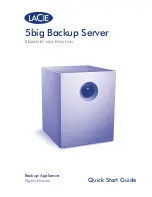
QoS Policies
7950 XRS Quality of Service Guide
Page 21
QoS Policies
Service ingress, service egress, and network QoS policies are defined with a scope of either
template or exclusive. Template policies can be applied to multiple SAPs or IP interfaces, whereas,
exclusive policies can only be applied to a single entity.
On most systems, the number of configurable SAP ingress and egress QOS policies per system is
larger than the maximum number that can be applied per FP. The
tools dump system-resources
output displays the actual number of policies applied on a given FP (noting that the default SAP
ingress policy is always applied once for internal use). The
show qos sap-ingress
and
show qos
sap-egress
commands can be used to show the number of polices configured.
One service ingress QoS policy and one service egress QoS policy can be applied to a specific
SAP. One network QoS policy can be applied to a specific IP interface. A network QoS policy
defines both ingress and egress behavior.
Router QoS policies are applied on service ingress, service egress, and network interfaces and
define:
Classification rules for how traffic is mapped to queues
•
The number of forwarding class queues
•
The queue parameters used for policing, shaping, and buffer allocation
•
QoS marking/interpretation
There are several types of QoS policies:
•
Service ingress
•
Service egress
•
Network (for ingress and egress)
•
Network queue (for ingress and egress)
•
Slope
Service ingress QoS policies are applied to the customer-facing Service Access Points (SAPs) and
map traffic to forwarding class queues on ingress. The mapping of traffic to queues can be based
on combinations of customer QoS marking (IEEE 802.1p bits, DSCP, and TOS precedence), IP
and MAC criteria. The characteristics of the forwarding class queues are defined within the policy
as to the number of forwarding class queues for unicast traffic and the queue characteristics. There
can be up to eight (8) unicast forwarding class queues in the policy; one for each forwarding class.
A service ingress QoS policy also defines up to three (3) queues per forwarding class to be used
for multipoint traffic for multipoint services. In the case of the VPLS, four types of forwarding are
supported (which is not to be confused with forwarding classes); unicast, multicast, broadcast, and
Summary of Contents for 7950
Page 12: ...Page 12 7950 XRS Quality of Service Guide List of Figures ...
Page 16: ...Preface Page 16 7950 XRS Quality of Service Guide ...
Page 82: ...Editing QoS Policies Page 82 7950 XRS Quality of Service Guide ...
Page 90: ...Applying Network Queue Policies Page 90 7950 XRS Quality of Service Guide ...
Page 96: ...Editing QoS Policies Page 96 7950 XRS Quality of Service Guide ...
Page 98: ...Command Hierarchies Page 98 7950 XRS Quality of Service Guide ...
Page 108: ...Command Hierarchies Page 108 7950 XRS Quality of Service Guide ...
Page 156: ...Basic Configurations Page 156 7950 XRS Quality of Service Guide exit exit ...
Page 164: ...Queue Depth Monitoring Page 164 7950 XRS Quality of Service Guide ...
Page 304: ...Service Queue QoS Policy Commands Page 304 7950 XRS Quality of Service Guide ...
Page 368: ...Command Hierarchies Page 368 7950 XRS Quality of Service Guide ...
Page 430: ...Configuration Commands Page 430 7950 XRS Quality of Service Guide ...
Page 532: ...Editing QoS Policies Page 532 7950 XRS Quality of Service Guide ...
Page 552: ...Editing Advanced Policies Page 552 7950 XRS Quality of Service Guide ...
Page 600: ...Command Hierarchies Page 600 7950 XRS Quality of Service Guide ...
Page 602: ...QoS Commands Page 602 7950 XRS Quality of Service Guide ...
Page 610: ...Standards and Protocols Page 610 7950 XRS Quality of Service Guide ...
Page 612: ... 2015 Alcatel Lucent All rights reserved 3HE 09868 AAAA TQZZA 01 ...
















































